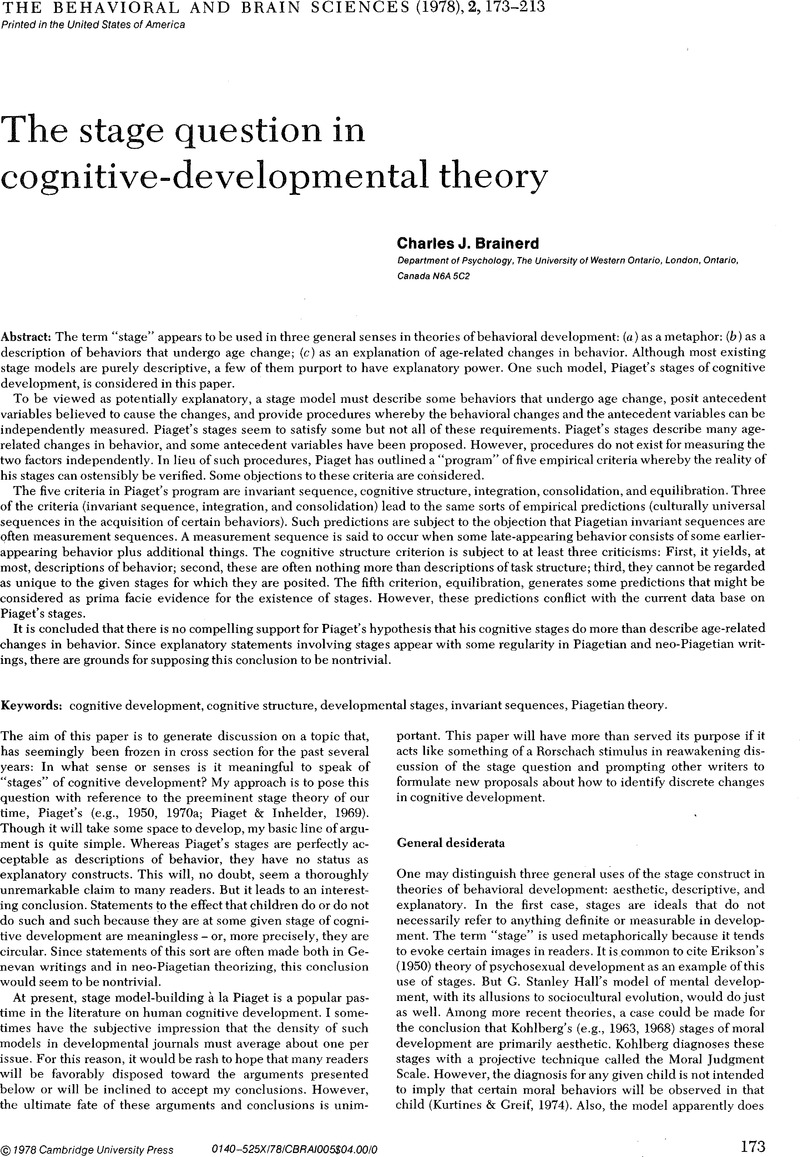No CrossRef data available.
Article contents
Species-specific acquisition vs. universal sequence of acquisition
Published online by Cambridge University Press: 04 February 2010
Abstract
An abstract is not available for this content so a preview has been provided. Please use the Get access link above for information on how to access this content.

- Type
- Open Peer Commentary
- Information
- Copyright
- Copyright © Cambridge University Press 1978
References
REFERENCES
Ammon, P. Cognitive Development and Early Childhood Education: Piagetian and Neo-Piagetian Theories. In: Horn, H. L. and Robinson, R. R. (eds.), Psychological Processes in Early Education. New York: Academic Press, 1977.Google Scholar
Chevalier-Skolnikoff, S. A Piagetian Model for Describing and Comparing Socialization in Monkey, Ape, and Human Infants. In: Chevalier-Skolnikoff, S. and Poirier, F. (eds.), Primate Bio-social Development. New York: Garland Publishing, Inc. 1977.Google Scholar
Gibson, K. R., Brain Structure and Intelligence in Macaques and Human Infants from a Piagetian Perspective. In: Chevalier-Skolnikoff, S. and Poirier, F. (eds.) Primate Bio-social Development. New York: Garland Publishing, Inc. 1977.Google Scholar
Monier, M. Comment in the Third Discussion. In: Tanner, J. M. and Inhelder, B. (eds.), Discussions on Child Development, vol. 4. New York: International Universities Press, 1960.Google Scholar
Nyiti, R.The Development of Conservation in Meru Children in Tanzania. Child Development. 47:1122–1129, 1976.CrossRefGoogle Scholar
Parker, S. T. Piaget's Sensorimotor Series in an Infant Macaque: A Model for Comparing Unstereotyped Behavior and Intelligence in Human and Nonhuman Primates. In: Chevalier-Skolnikoff, S. and Poirier, F. (eds.),Primate Bio-social Development. New York: Garland Publishing, Inc. 1977.Google Scholar
Comparative Behavioral Development in Human, Gorilla, and Macaque Infants.Paper delivered at the 46th Annual Meetings of the American Association of Physical Anthropologists.April 1977.Seattle, Wash. Abstract in American Journal of Physical Anthropologys. 47:154. 1977.Google Scholar


